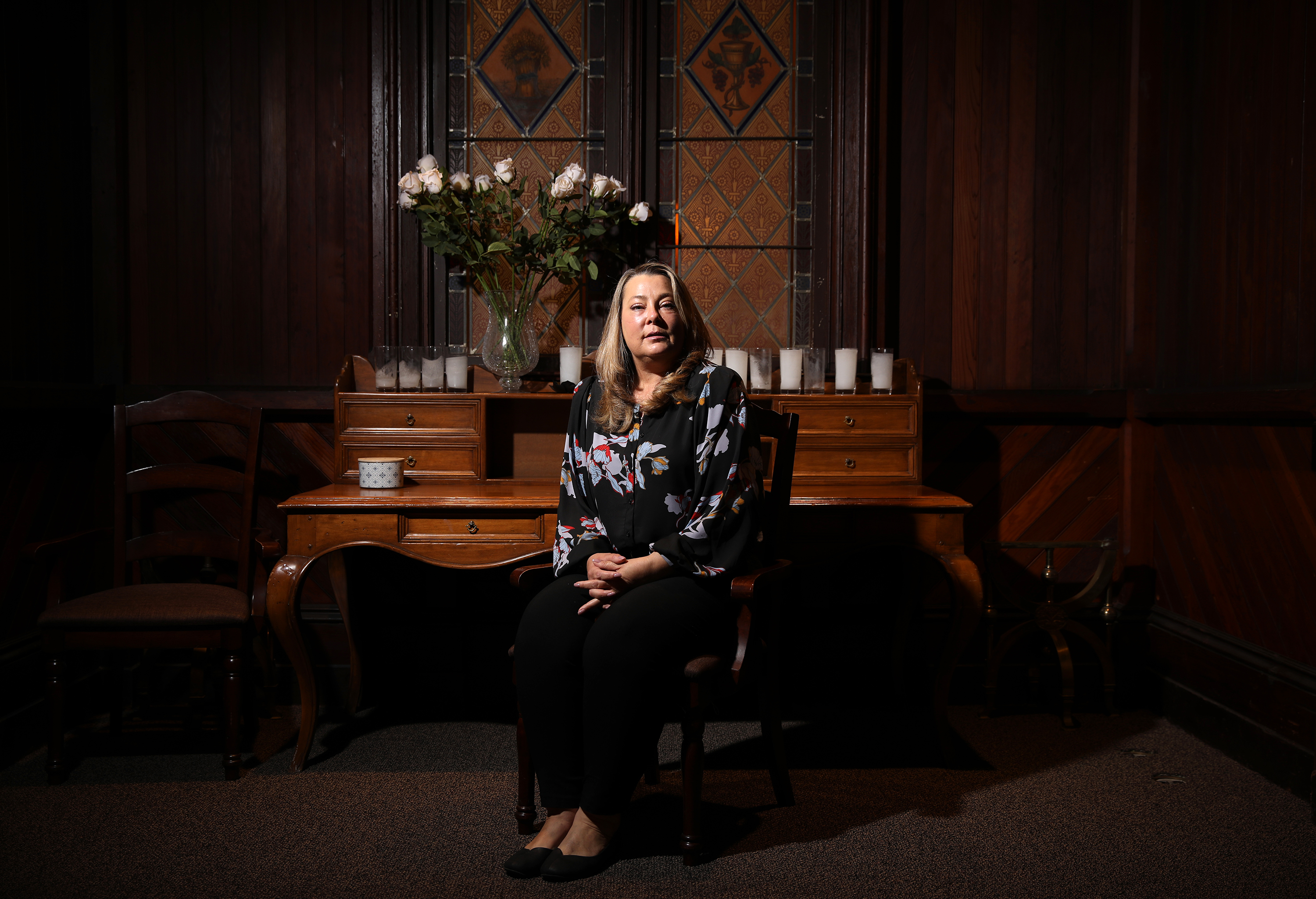The Lonely Funeral Blues
Grief Takes a Backseat to Coronavirus Rules

Twelve. This is the number of people who have died of COVID-19 in Santa Barbara County since Governor Newsom issued a stay-at-home order that, among many guidelines, restricts gatherings of more than 10 people. But in the wake of the pandemic, funeral directors must balance social distancing with the undeniable needs of a family in mourning. For each of the 12, whose names remain clothed in privacy laws, there were friends, family, and loved ones who were forced to find alternative ways to grieve together without actually being together. It’s a dilemma shared by all families who have lost a loved one in the past two months — on average, eight people die daily in the county for a variety of reasons.
“It is so important for us to grieve communally,” said Jennifer Parks, who is general manager of the McDermott-Crockett mortuary. “For centuries, we have gathered together and provided comfort, but right now we can’t do that. So we find different ways.” Parks likened a funeral to planning a wedding in three days — two events that exemplify the importance of celebrating life.
One family who requested anonymity recalled their fear that the celebration of their grandfather’s life would be “strange and awkward” as they struggled to honor his Christian wishes and the governor’s edict. One of the family members works as a nurse in Cottage Hospital’s coronavirus unit and knows more than anyone the importance of the guidelines. The family said the funeral home’s historical chapel was a simple blessing, as was the sermon by their pastor and uplifting music from the organ, both heard at a distance. Friends and family were ushered in in waves of 10, and each was given time to grieve alone; the only thing that was spread were condolences, stories, and songs from 10 feet away. Social distance was respected, they said, and dignity was paid to their grandfather’s wishes.
Cemeteries, however, are grappling with the effects of the stay-at-home order on graveside services and visits. They must maintain social distancing among mourners, limit the number of guests to 10, and monitor visitors.
At Goleta Cemetery, manager Rick Bower said his staff must also ask people visiting grave sites to stay six feet apart. In their offices, visitors wear masks and are limited to two at a time. In contrast, the Santa Barbara Cemetery holds meetings only virtually and banned flowers and personal items at gravesites, as well as the trash left behind. The Santa Barbara Cemetery Association requires all service attendees to remain in their cars for the safety of both employees and service goers. Caskets are put underground “as quickly as possible,” a spokesperson said.
For Ruben Rey, who has held funerals with Pueblo del Rey for 22 years, the ceremony traditionally involves “lots of crying, hugging, and touching.” They are consoling and uplifting acts of love, he said. In services he’s held for Catholics, the rituals of a Rosary, funeral mass, and a cemetery service reflect the faith in honoring the living and the dead, the life of the individual and the life of the community, said Rey, who is well-respected in the Catholic and Latino communities.
“For the Latino community, the final closure is so important so they can see their loved ones,” Rey said of funeral services. “And even if they may have not seen them in a long time, it is in those last final moments they can say goodbye.” He noted that some of his clients want to respect the individual’s wish to be buried in Mexico.
While Rey is an important advocate in the families’ interest, he is no stranger to the risks of the pandemic. He himself is immunocompromised due to his age and preexisting medical conditions.
The restrictions that accompany cemetery services are forcing some families to make a difficult decision between burial and cremation. Burial has a short window of two to three days after death. Embalming can lengthen that to weeks, months, or even years, depending on how much mourners are willing to spend. Cremation enables an end-of-life ceremony to be postponed until it is safe to people to reunite, but it is an undesirable choice among some faiths. As well, religions like Islam and Judaism require burial within 24 hours, which shortens the window of grieving even further.
In the struggle for balance, Rey said, he’s seen families choose to stick with tradition and conduct a small cemetery service. Not all families can afford the flexibility of options, he observed. The average cost of a burial in Santa Barbara is $12,257, almost six times the cost of cremation, which is approximately $2,250.
Jennifer Parks estimated that cremation is requested about 80 percent of the time, and she anticipated an increase due to the pandemic. Because infection from COVID was unknown post-mortem, McDermott-Crockett was taking additional precautions. Employees wear protective gear to pick up bodies at the hospital and to deliver cremated remains. If there is any suspicion of coronavirus-caused death, the body’s mouth and nose is covered, and a body bag may be substituted for a shroud.
In the past couple months, funeral ceremonies have turned to alternatives like Zoom conferences, which can span global distances; heartfelt videos with fond memories and well wishes; and even placing roses in seats for family members who are unable to be there.
While services such as Zoom are regarded as notoriously impersonal, Parks noted a newfound acceptance has emerged for online interaction since it allows family and friends to attend a gathering they’d otherwise miss.
What once seemed impossibly alienating has become a means to honor a life and share stories, grief, and joy. It’s an unwavering instinct that’s helping to redefine what a gathering is going to be until a vaccine is created.
At the Santa Barbara Independent, our staff continues to cover every aspect of the COVID-19 pandemic. Support the important work we do by making a


